A Complete Guide to Caviar in New Zealand: Savouring the Kiwi Experience
Caviar, also known as the luxurious delicacy made from fish eggs, has long been enjoyed by people around the world for its unique taste and texture. New Zealand, with its pristine waters and vibrant seafood industry, offers a range of locally produced caviars that cater to enthusiasts and first-time tasters alike. In this guide, we will be exploring the world of caviar in New Zealand, from its origins to its cultivation process and the culinary experience it offers.
The origins of caviar date back thousands of years, with its consumption first recorded in ancient civilisations around the Caspian Sea. As caviar gained popularity, producers around the world, including in New Zealand, began cultivating their own varieties of caviar using local sturgeon species and methods that cater to the unique environment and market demands. This means that caviar in New Zealand not only offers a diverse range of flavours and textures, but also represents a proud tradition of fishing and sustainable seafood practices.
Key Takeaways
- New Zealand offers diverse caviar options, catering to enthusiasts and first-time tasters
- The cultivation process is adapted to the unique environment and market demands
- Caviar in New Zealand represents a proud tradition of sustainable seafood practices
The Origins of Caviar
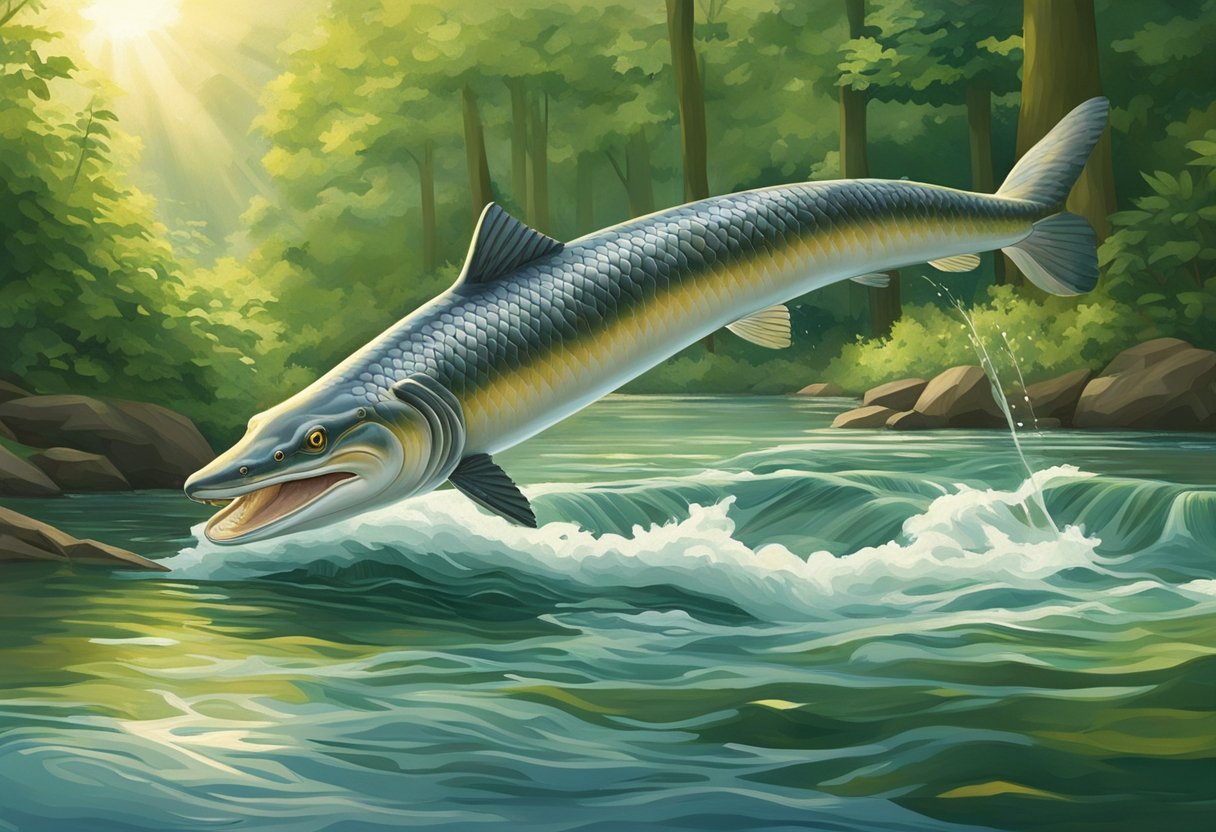
History in New Zealand
When I think about caviar, I usually imagine luxurious dining experiences in some of the world’s most high-end locations. But did you know that caviar has a history right here in New Zealand? The sturgeon caviar industry in New Zealand is relatively young, but it’s rapidly gaining attention for its exceptional quality and taste.
New Zealand’s clean and pristine waters, combined with our passion for sustainable practices, make it an ideal environment for raising sturgeon and producing caviar. Over the past few decades, innovative Kiwi farmers have been developing methods to nurture healthy sturgeon stocks and harvest their precious roe.
I’ve had the chance to sample some of this locally-produced caviar, and trust me, it’s absolutely divine. It’s no wonder that New Zealand caviar is quickly becoming a sought-after item amongst international gourmets.
Sturgeon Species Worldwide
While sturgeon farming is a relatively new phenomenon in New Zealand, sturgeon themselves have a rich and storied history worldwide. There are more than 24 species of sturgeon spread across the Northern Hemisphere, many of which are sought after for their caviar. Let me give you a brief rundown of the most notable species:
- Beluga Sturgeon – The rare and highly-prized source of Beluga caviar, which is sadly banned in the United States because of its endangered status. It’s native to Russia, where it’s majestic and famous for its immense size.
- Osetra Sturgeon – Regarded for its golden eggs, Osetra caviar is considered one of the finest types of caviar available. The Osetra sturgeon can be found in the Caspian Sea, stretching to Russia and Kazakhstan.
- Sevruga Sturgeon – Smaller than other sturgeons and producing smaller eggs, Sevruga caviar is still considered a delicacy and is appreciated for its uniquely intense and buttery flavour.
I love learning about the vast world of sturgeon species and the incredibly varied and delectable range of caviar they produce. It’s fascinating to me that such a luxurious and indulgent food can be sourced from so many different regions and environments. And now that we have our very own New Zealand-made caviar, I can’t help but feel incredibly proud. Of course, there’s always more to explore and discover in the world of caviar, and I believe any caviar lover should expand their palate by trying the rich variety of flavours from across the globe.
Types of Caviar in New Zealand
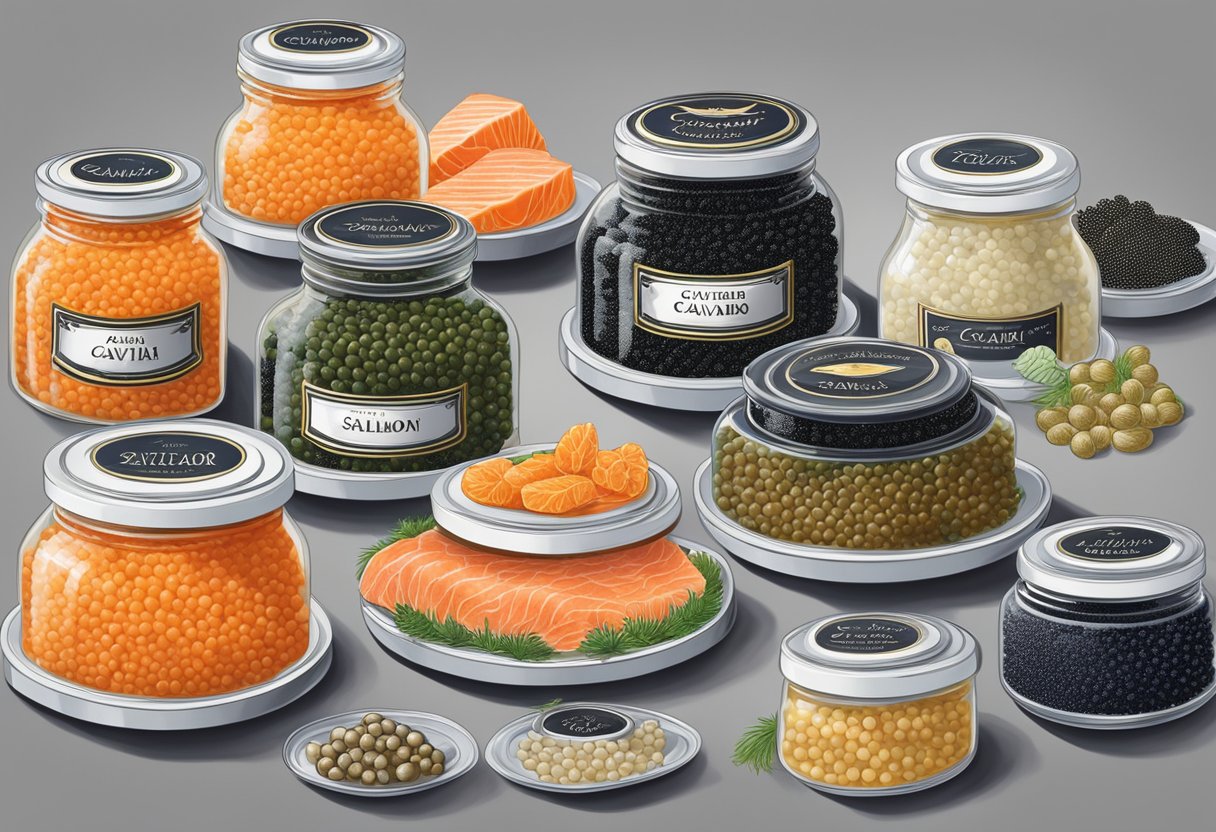
As a caviar enthusiast, I’m excited to introduce you to some of the most popular types of caviar available in New Zealand. In this section, we’ll explore five specific varieties: Beluga Caviar, Black Caviar, Salmon Caviar, Astrakhan Caviar, and Bottarga Caviar. Each of these offers its own unique flavours and textures that cater to different tastes. So, let’s dive in!
Beluga Caviar
Beluga caviar is considered the most prestigious type of caviar, originating from the rare and endangered Beluga sturgeon. This caviar features large, smooth eggs with a delicate and buttery flavour. Due to its scarcity, it can be quite expensive. In New Zealand, I have seen it served at high-end restaurants and special occasions. While it is not a common find, it’s definitely worth trying if you come across it!
Black Caviar
When people think of caviar, they typically think of black caviar. Black caviar comes from various sturgeon species like Osetra, Sevruga, and Sterlet. The flavours can range from mild to rich, with nutty and earthy undertones. I find that a plethora of black caviar types are available in New Zealand – making it an excellent choice for those looking to explore different caviar varieties.
Salmon Caviar
Salmon caviar, also known as red caviar or ikura, consists of the roe from various salmon species. Its vibrant orange-red colour and distinct pop-in-your-mouth texture make it a popular choice for sushi and seafood dishes in New Zealand. In my experience, the flavour can be mildly sweet and salty, with a subtle hint of fishiness that perfectly complements fresh seafood dishes.
Astrakhan Caviar
Astrakhan caviar hails from the Caspian Sea region and is often considered a more affordable alternative to Beluga caviar. It is smaller and may have a slightly stronger flavour compared to the delicate taste of Beluga. Thanks to the global caviar trade, you can find Astrakhan caviar in New Zealand, offering an excellent option for those who want an authentic caviar experience without breaking the bank.
Bottarga Caviar
Bottarga caviar is a Mediterranean delicacy made from the cured roe of grey mullet or bluefin tuna. It’s typically grated or thinly sliced and enjoyed as a topping for pasta, risotto, or seafood dishes. While it’s not as common as other caviar types in New Zealand, I’ve spotted it at some specialty food stores and Mediterranean restaurants. Its firm texture and intense, salty flavour make it an exciting addition to various dishes.
So, these were some of the caviar varieties that can be found in New Zealand. Each type has its unique characteristics and flavours that cater to different palates, making caviar a versatile and captivating culinary experience.
Cultivation Process

Farming Sturgeon
Farming sturgeon for caviar production in New Zealand is a growing industry. These fascinating fish are quite a sight, with their unique prehistoric appearance. To farm sturgeon successfully, the environment needs to closely resemble their natural habitat. That’s why it’s important for farmers to maintain high-quality water conditions and provide ample space for the fish to move around.
Sturgeon are rather adaptable to different climates but do best in temperate conditions. Water temperature and other parameters should be monitored closely to ensure optimal growth. It’s also essential to provide a healthy, varied diet for sturgeon, which usually consists of pellet-based fish food and occasional protein-rich treats.
Harvesting the Roe
Harvesting the roe from sturgeon is a delicate and time-sensitive process. Mature sturgeon females, aged around 10-12 years, are selected for roe extraction. The fish are carefully examined first to determine the sturgeons’ readiness for harvesting. In some cases, non-invasive ultrasound techniques can be used to assess the roe development.
Once a suitable sturgeon has been chosen, it’s sedated to minimise stress during the extraction process. The fish’s abdomen is then gently massaged to release the egg sacs. Harvesters must exercise caution to avoid puncturing the sacs and damaging the precious caviar. The roe is separated from the membranous sac, and any remaining connective tissue is removed.
After collection, the roe is cleaned and rinsed in a saline solution. Next, it’s graded based on size, texture, and colour. Top-quality caviar usually has a larger size, firm texture, and a more vibrant colour. The roe is then gently mixed with a small amount of salt, which helps to preserve it and enhance the flavour. This process, known as malossol, must be performed swiftly to ensure the freshness of the caviar.
Once the caviar is prepared, it’s carefully packed in tins, sealed, and labelled with vital information, including the production date, origin, and grade. This high-quality caviar can fetch a pretty penny depending on the scarcity and demand. Now you know a little bit about the cultivation process in New Zealand, you can make more informed choices when enjoying this luxurious treat.
Culinary Experience
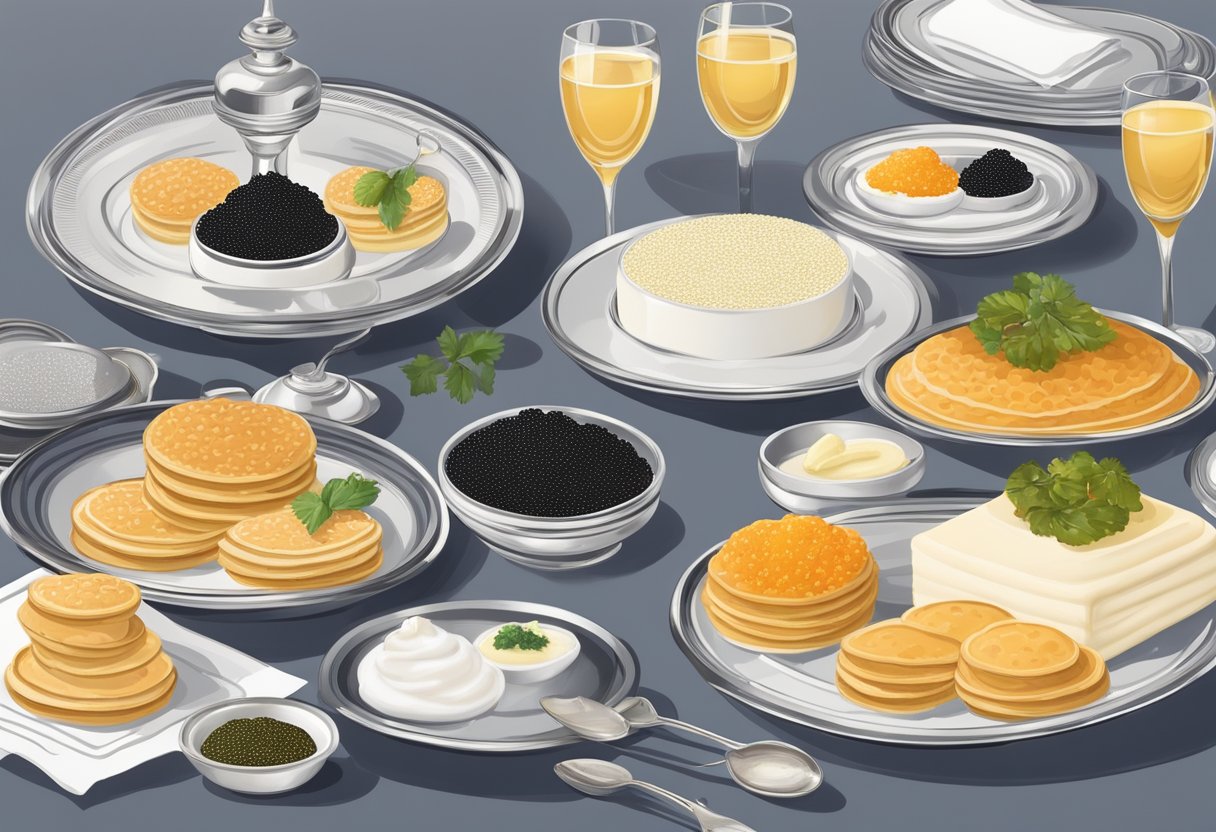
What Does Caviar Taste Like?
As a caviar enthusiast, I can confidently say that caviar has a unique and luxurious taste. High-quality caviar, especially black caviar, has a subtle, briny flavor that gently unfolds on your palate. It’s difficult to describe the exact taste, as it’s a combination of delicate, buttery, and mildly fishy notes. The texture plays a significant role in the overall experience – the little pearls should have a firm consistency and should pop when you bite into them. Trust me, trying caviar for the first time is a delightful experience that you won’t forget.
Traditional Pairings and Serve
Now, let’s talk about how to serve and pair caviar to make your tasting experience even better. In traditional Russian style, caviar is commonly served on a bed of ice – it should always be well-chilled to preserve its flavor. Here are some other tips and pairing ideas:
- Blinis and Toast Points: These small pancakes and thin toast slices are the classic bases for serving caviar. You may also try some lightly buttered toast or small squares of pumpernickel bread.
- Condiments: Caviar is often accompanied by finely chopped onion, grated egg white, grated egg yolk, and fresh herbs like dill or chives. However, you can skip these if you’d like to focus solely on the caviar’s taste.
To really elevate the experience, here are some classic pairings to consider:
- Chilled Vodka: A cold shot of vodka is an excellent companion for caviar. The sharpness of the vodka cleanses your palate and contrasts beautifully with the caviar’s richness. Remember to sip, not shoot!
- Champagne: A crisp glass of champagne is another popular choice for enjoying caviar. The bubbly nature of the champagne refreshes your palate and highlights the caviar’s flavor nuances.
Take note of these recommendations, and you’re sure to have a memorable caviar-tasting experience! The key is to appreciate the subtle flavors and luxurious textures that make caviar a true culinary treat.
Health Benefits and Nutrition
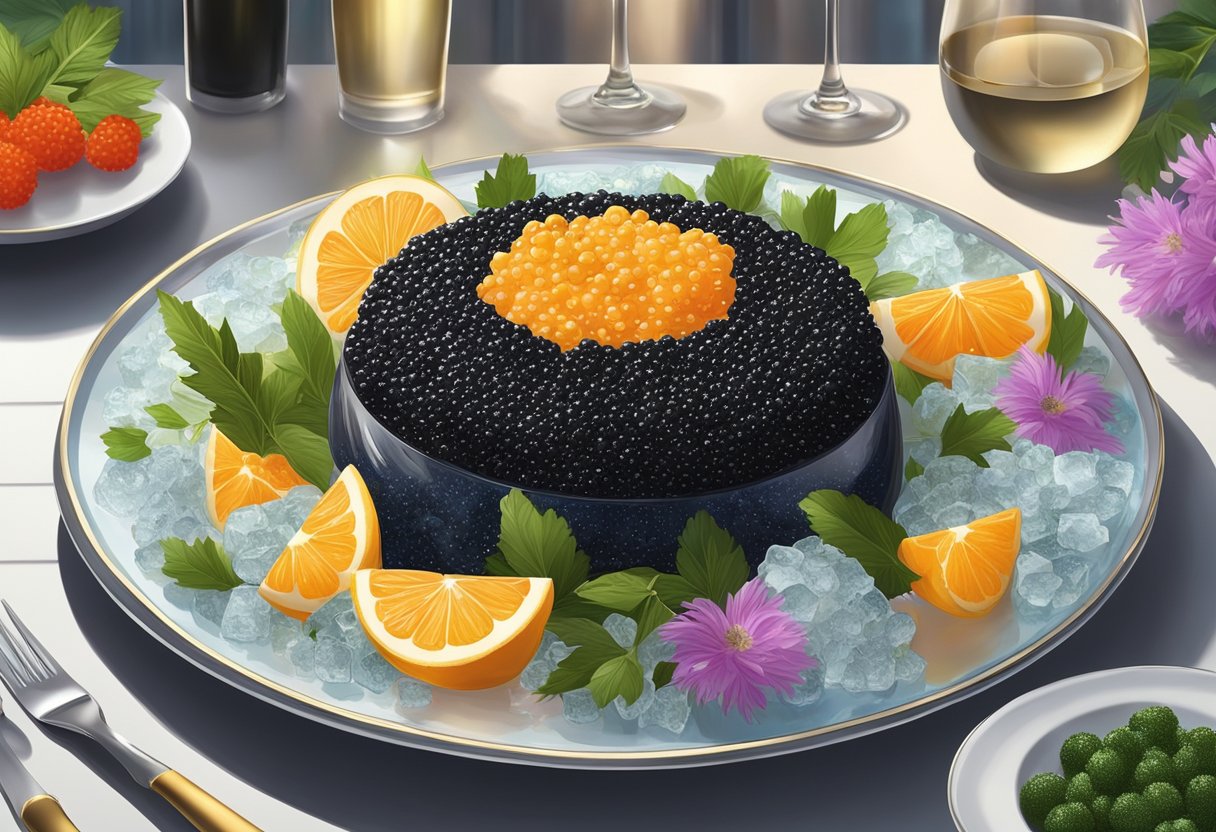
As an avid caviar lover, I was curious about the health benefits and nutritional value of caviar in New Zealand. So, I did some research to find out more about this luxurious delicacy.
Nutritional Value
Caviar is known for being rich in essential nutrients that can positively impact our health. Some of the key nutrients found in caviar include:
- Vitamin B12: Crucial for maintaining healthy cells and nerve function. One serving of caviar can provide more than 100% of the recommended daily intake of this vital vitamin.
- Omega-3 fatty acids: Beneficial for heart and brain health. Caviar is packed with DHA and EPA, which are types of omega-3 fatty acids.
- Selenium: An antioxidant that combats free radicals and supports immune system function.
- Iron: Helps to transport oxygen throughout the body and is essential for energy production.
- Vitamin A, D, and E: Important for maintaining good vision, bone health, and immune function.
Additionally, caviar is a good source of protein, making it an excellent choice for those looking to add some variety to their protein intake.
Dietary Considerations
It’s important to note that caviar is quite high in sodium, which can be a concern for some people, particularly those with high blood pressure. So, moderation is key when enjoying this delicacy.
While caviar is considered a nutrient-dense food with numerous health benefits, I also understand that it’s important to include a variety of foods in my diet for overall wellbeing. Caviar is best enjoyed as a special treat rather than a daily staple.
In conclusion, caviar in New Zealand not only offers exquisite taste but also provides a wealth of nutritional benefits. The key is to enjoy it in moderation while maintaining a balanced and diverse diet.
Market and Pricing
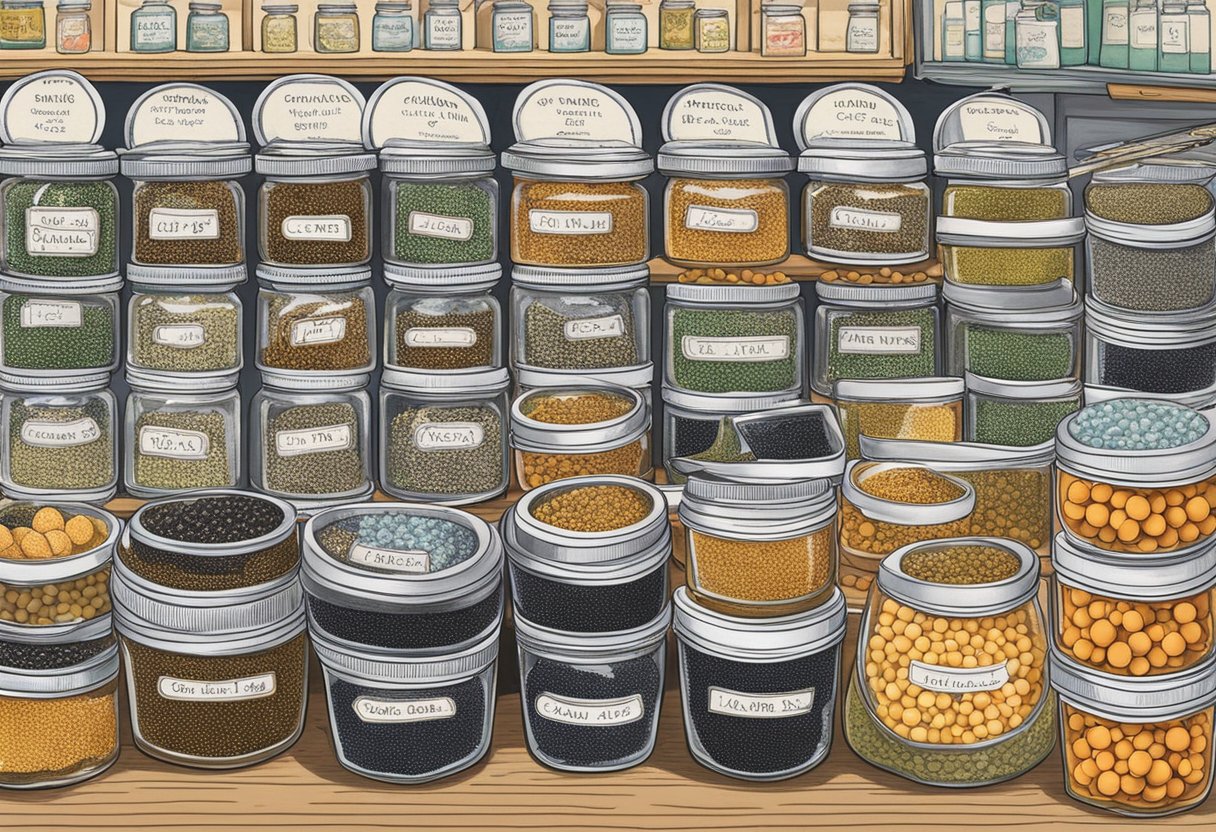
Determining Caviar Quality
In my experience with caviar, I’ve learned that several factors come into play when determining its quality. Age, colour, and texture are crucial indicators. It’s not just about the taste; a caviar’s firmness and appearance also matter. The higher the quality, the more delicately it should be handled. I prefer using a special mother-of-pearl spoon to serve caviar, as metal utensils can alter its taste.
The ideal caviar should be glossy and have a vibrant colour. There’s a diverse range of colours and flavours, depending on the type of fish it comes from. For example, Beluga caviar is often larger and lighter in colour, while Sevruga tends to be smaller and darker. While every caviar has its unique attributes, here’s what you should generally look for:
- Age: older caviar can develop a rich and complex flavour profile.
- Colour: brighter shades typically indicate better quality.
- Texture: finest caviar has a creamy or buttery consistency.
Understanding Price Brackets
The price of caviar can vary depending on where you are in New Zealand. As caviar is a luxury delicacy, you can expect to pay a premium for it. Factors influencing the cost include the rarity and quality of the fish eggs, production methods, and import costs. Here’s how the caviar wholesale market prices in New Zealand look:
| Caviar Type | Price Range |
|---|---|
| Beluga | $$$$, very high |
| Oscietra | $$$, high |
| Sevruga | $$, moderate |
| Lumpfish and Paddlefish | $, more affordable |
Beluga caviar, for example, is known for its exquisite flavour and limited availability, which puts it in the highest price range. On the other hand, lumpfish and paddlefish caviar might be more affordable for those who want to experience the delicacy without breaking the bank.
Don’t be afraid to ask questions at a specialty store or restaurant. Caviar connoisseurs are often eager to share their knowledge and help you find the best option within your budget. With this information in hand, I hope you’ll enjoy exploring the luxurious world of caviar in New Zealand – it’s worth every dollar!
Shopping for Caviar
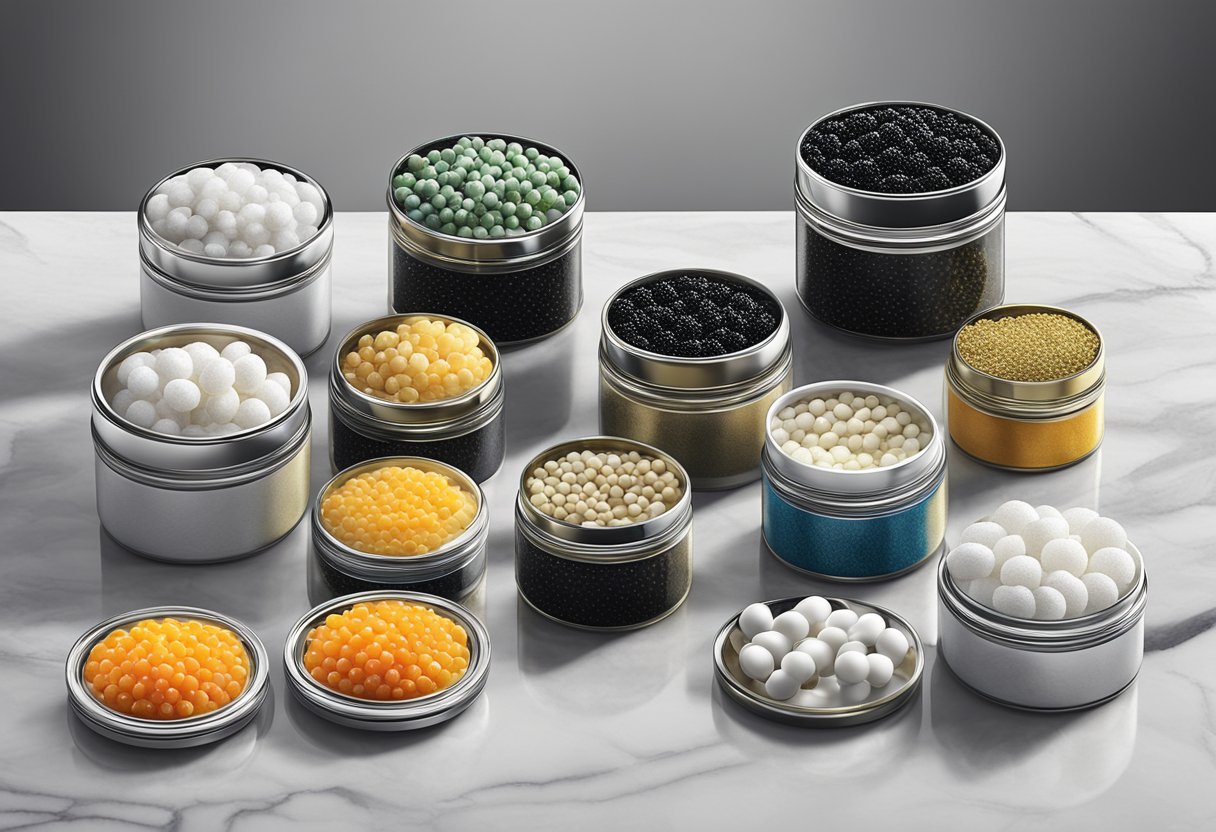
Where to Buy Caviar
When it comes to buying caviar in New Zealand, there are a few options. First, check out local gourmet markets and specialty food stores. They might have a small selection of caviar, but the quality is usually top-notch. Additionally, high-end supermarkets might also carry caviar, although the variety might be limited. Finally, you can also purchase caviar from online retailers, such as globalseafoods, which offers a wide range of caviar products and delivery options.
It’s important to remember that caviar is a delicate product, so you’ll want to do some research and buy from a reputable source. Don’t be afraid to ask questions about the environment the fish were raised in, water quality, and whether any pesticides, antibiotics, or growth hormones were used1.
Identifying Authenticity
When shopping for caviar, there are a few key things to keep an eye out for to ensure you’re getting the real deal. Here are some tips to help you identify authentic caviar:
1. Colour: Caviar ranges in colour from black to grey, with golden hues being the most sought-after and expensive. With that in mind, be cautious of any products that look too uniform or artificial.
2. Pearl size: The size of the eggs in caviar can vary depending on the fish species. Smaller eggs are generally cheaper, while larger eggs can be more expensive and luxurious. However, size is not a definitive indicator of quality—focus on taste and texture instead.
3. Consistency: The texture of caviar should be firm yet tender. When pressed against the roof of your mouth, the eggs should gently pop, releasing their flavour2. Be wary of any products that are mushy or have a strong fishy odour.
4. Packaging: Caviar should be stored in airtight containers, with a clearly marked expiration date. Also ensure that the packaging mentions the species of fish the caviar comes from, the country of origin, and any certification numbers that can vouch for its quality3.
I hope these tips help you in selecting the perfect caviar for your next special occasion in New Zealand. Happy shopping!
Footnotes
Storage and Preservation

Proper Storage Techniques
When it comes to caviar, I’ve found that proper storage is key to maintaining its quality and freshness. In general, caviar should be kept in the coldest part of the fridge, ideally at a temperature between 0°C and 4°Celsius. Avoid placing it near the freezer compartment, as freezing can damage the delicate eggs.
A handy tip I’ve learned is to place the caviar container on a bed of ice inside a larger, well-sealed container. This helps to maintain the optimal temperature and keeps any unwanted odours at bay. When opening the caviar tin, always use a non-metallic spoon, such as mother-of-pearl or even a plastic spoon, as metal utensils can alter the taste of the caviar. It’s also important to reseal the container tightly after each use to prevent air exposure and spoilage.
Shelf Life and Expiry
Understanding the shelf life of caviar is essential for ensuring it remains fresh and enjoyable. When properly stored, unopened caviar can last from four to eight weeks, depending on the type and packaging. Once the tin is opened, however, the shelf life typically decreases to a mere three to four days.
In any case, it’s always best to check the expiry date on the packaging, as this provides the most accurate estimate for freshness. If you’re not planning on consuming all the caviar at once, consider transferring smaller portions into separate containers, thereby reducing the number of times the main tin is exposed to air.
Remember, good storage and preservation techniques play a crucial role when it comes to enjoying caviar at its best. By following these tips, you can make the most of your New Zealand caviar experience.
Caviar Etiquette
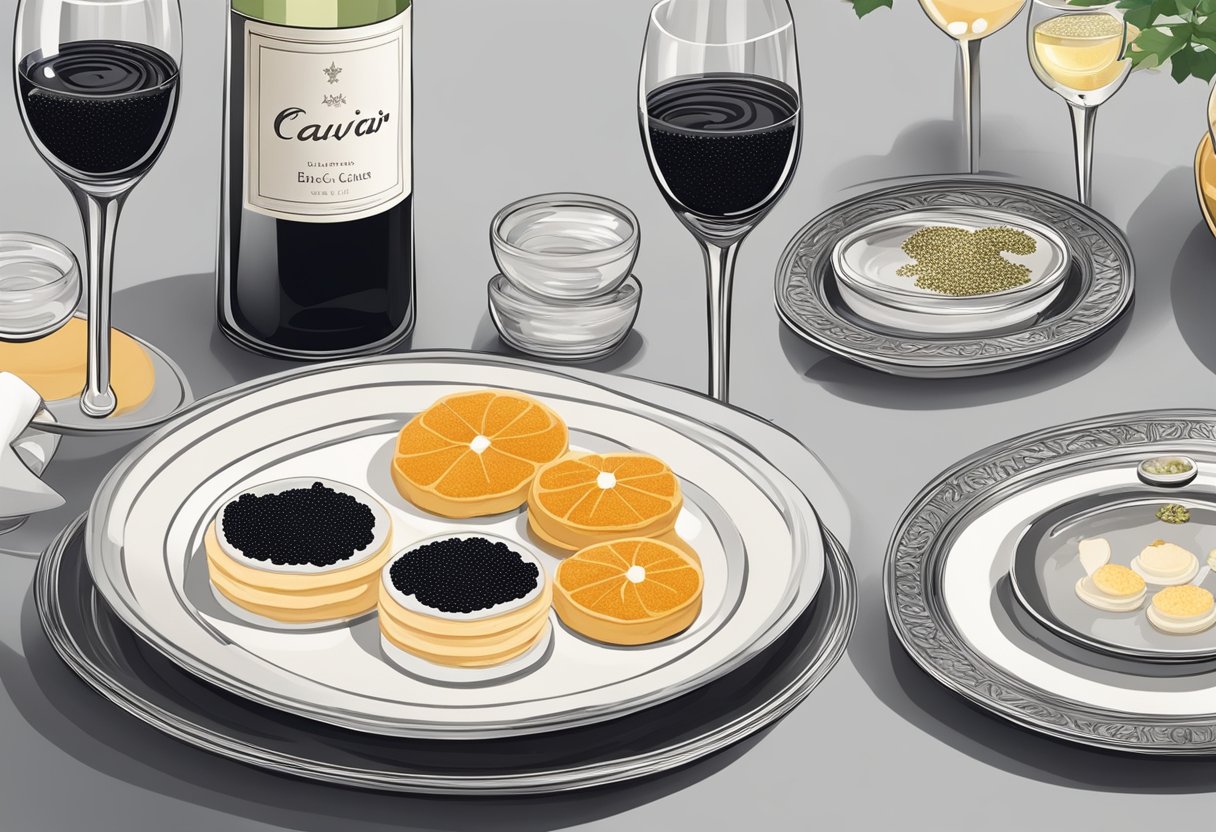
Consumption Manners
When it comes to consuming caviar, I believe it’s essential for people to know the proper manners. Firstly, it’s best to enjoy caviar in small increments. Traditionally, a small spoon, often made of mother-of-pearl, is used to scoop and savour the delicate fish eggs. It’s because metal spoons can interfere with the taste.
Another aspect of caviar consumption is the pairing. It goes well with plain foods like blinis or toast points, as these don’t overpower its flavour. If you prefer beverages, options like vodka or champagne can complement the taste.
Serving Etiquette
When I serve caviar, I make sure to adhere to these few basic etiquette rules:
- Temperature: Caviar should be served cold – keep it on ice or place it in the fridge for at least 15 minutes before serving.
- Presentation: Use a special caviar dish or plate with a small bowl in the centre for the caviar, surrounded by its accompaniments.
- Portion sizes: For each person, serve about 15 to 30 grams, depending on the occasion and your budget.
In conclusion, following proper caviar etiquette ensures that everyone can appreciate its unique flavours and textures. So, next time you have the opportunity to enjoy this luxurious delicacy, take a moment to observe these guidelines, and you’ll make the experience even more memorable.
Caviar in New Zealand Cuisine
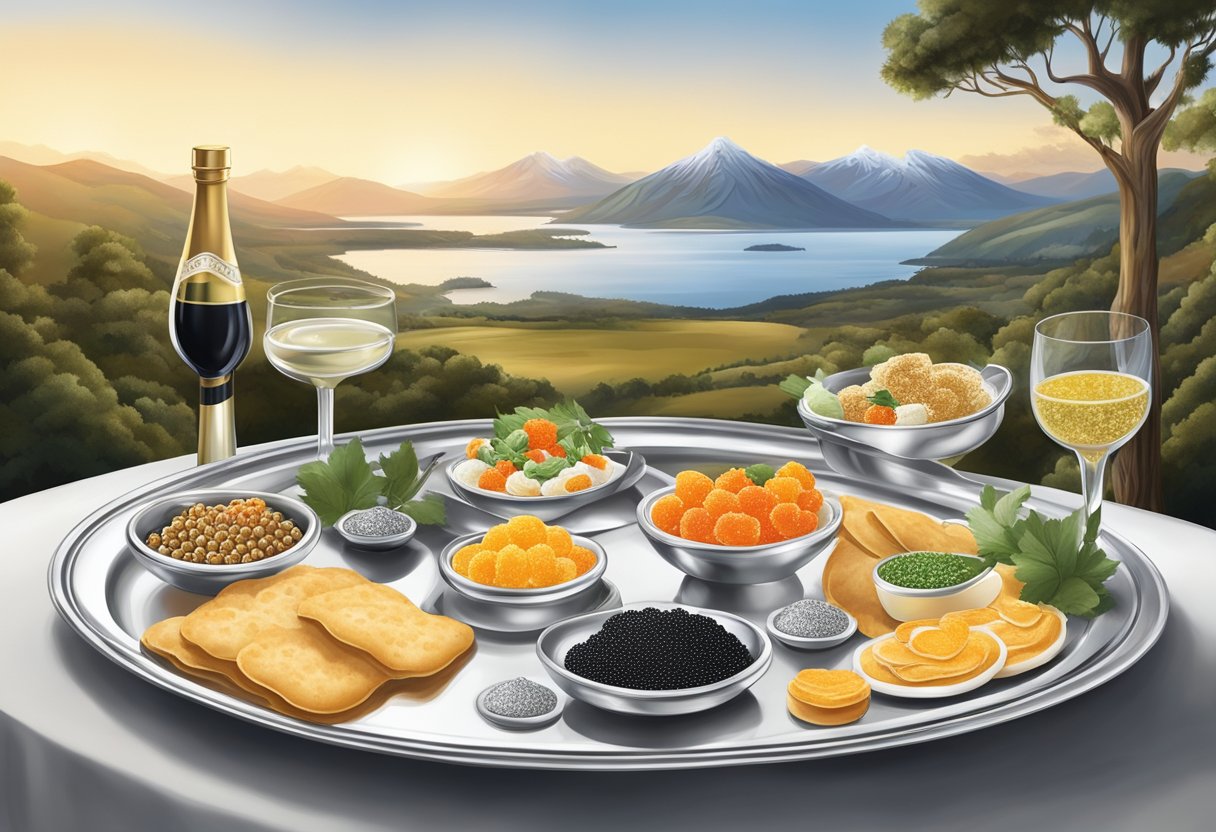
Fusion Dishes
In recent years, I’ve noticed that caviar has found its way into various fusion dishes in New Zealand. This is partly due to the country’s diverse culinary landscape, which has welcomed the blending of techniques and ingredients from different cultures. One such example is the exceptional pairing of caviar with apple, honeycomb and a soft, cheesy ice cream, served at a trendy Auckland restaurant called Sidart. It’s a striking combination that beautifully balances sweet and savoury flavours.
Pro tip! When sampling fusion dishes with caviar, I like to focus on the complimentary components—like hints of citrus, fresh herbs, or creamy textures—which help to highlight the subtlety and depth of the caviar’s taste.
Caviar as a Delicacy
Caviar definitely has a reputation for being a luxury item, and New Zealand is no exception to this trend. In fact, Auckland recently saw the opening of Le Béluga, the city’s first caviar bar. The establishment is named after the beluga sturgeon, a critically migratory fish from the Caspian Sea, which provides some of the most sought-after caviar in the world.
Here’s a quick comparison table of the types of caviar you might find in New Zealand, highlighting their unique characteristics:
| Type | Fish Origin | Color | Taste |
|---|---|---|---|
| Beluga Sturgeon | Beluga Sturgeon | Light grey | Rich, buttery |
| Osetra | Acipenser Gueldenstaedtii | Brownish-grey | Nutty, smooth |
| Sevruga | Acipenser Stellatus | Dark grey | Intense, briny |
In my experience, caviar is best enjoyed with minimal accompaniments, such as some toast points, blinis or even just a spoon, allowing the delicate flavour to shine through. When tasting caviar in New Zealand, I suggest treating yourself to this unique delicacy and taking the time to savour its complex notes that dance on your palate.
Sustainability and Conservation

Eco-friendly Practices
As a caviar enthusiast in New Zealand, I’m proud to say that our caviar industry is taking sustainability and conservation seriously. One example is the Kaluga caviar, which is being harvested and produced in an eco-friendly manner. By employing techniques like sustainable farming and aquaculture, the industry helps protect the environment while also providing us with this delicious treat.
In New Zealand, we adopt several conservation-focused practices, such as:
- Using recirculating aquaculture systems (RAS) that recycle water and reduce waste.
- Implementing strict regulations to monitor and control the harvesting process.
- Growing our fish in natural environments to minimize the impact on local ecosystems.
Role in Biodiversity
New Zealand’s commitment to biodiversity and species conservation goes beyond just caviar production. Our country takes part in global discussions for the preservation of threatened species and their habitats, as represented by the Ministry of Foreign Affairs and Trade (MFAT).
By fostering eco-friendly caviar production practices, we play a vital role in maintaining biodiversity. The sustainable methods used in our industry have a positive effect on the environment. This, in turn, contributes to the overall health of our ecosystems, allowing a diverse range of species to thrive.
Ultimately, as a lover of caviar in New Zealand, I feel confident in my country’s efforts to sustainably produce this delicacy. We’re steadily making progress towards a more environmentally responsible future while enjoying the finer things in life, like a taste of exquisite caviar.
Frequently Asked Questions
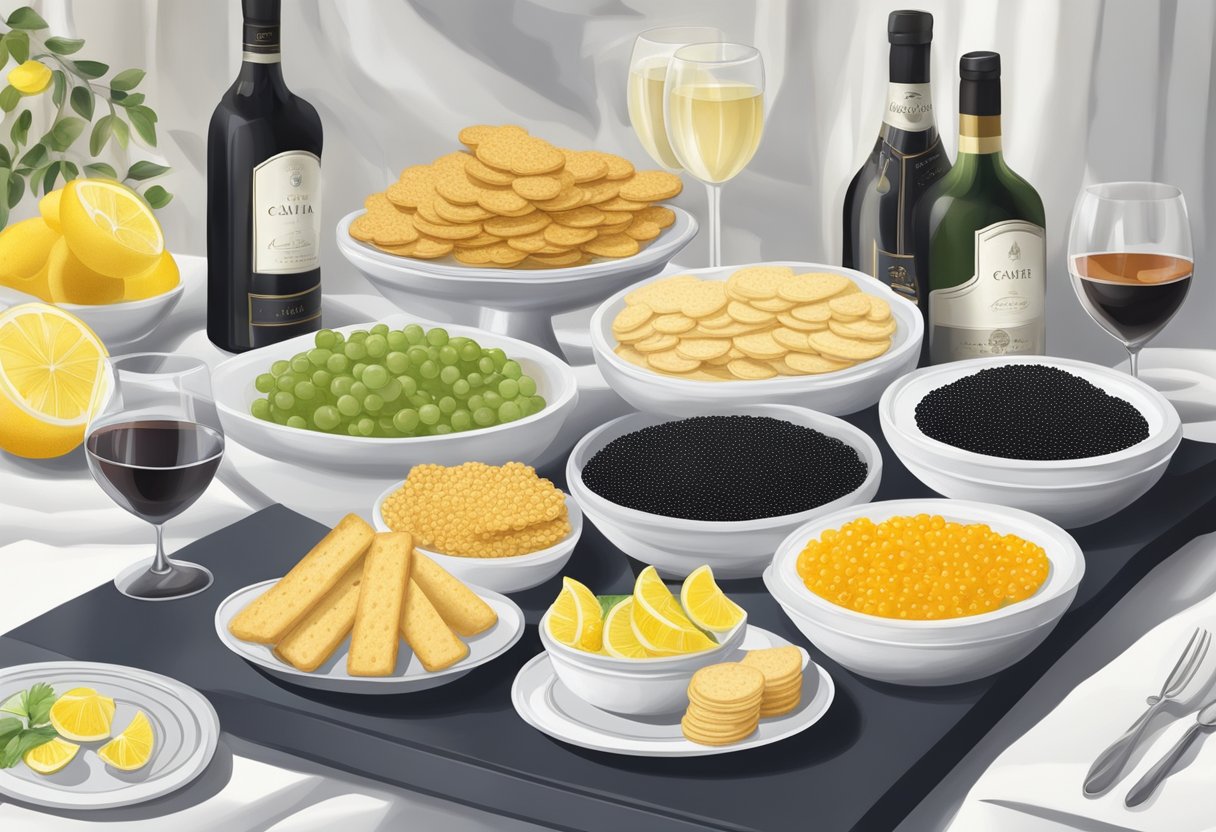
What does Caviar taste like?
Caviar has a unique taste that is a bit hard to describe. It’s generally rich, buttery, and slightly briny with a delicate oceanic flavour. Some might say it has a hint of fishiness, but the overall taste is quite sophisticated and moreish.
How much does Caviar cost?
Caviar can be quite expensive due to its rarity and the complex process of producing it. Prices vary depending on the type and quality, but you can expect to pay anywhere from AUD 50 to AUD 300 or more per 30g.
What to have with Caviar?
Caviar is often served with crackers or toast points, as well as classic accompaniments like blinis, crème fraîche, finely chopped onions, hard-boiled eggs, and lemon wedges. Be sure to avoid using metal utensils as they can alter the taste of the delicate eggs.
How is Caviar processed?
Caviar is made from the eggs of sturgeon fish. The eggs are carefully harvested, cleaned, and then salted or lightly processed before being packed into tins to preserve their flavour and texture. The entire process requires skill and precision to ensure the highest quality product.
I’m keen on trying Caviar for the first time, which one should I go for?
For first-timers, it’s generally recommended to try a more affordable and milder caviar variety, like salmon roe or hackleback. They still offer those luxurious caviar vibes without breaking the bank or overwhelming your taste buds.
Is there a limit to how much Caviar you should scoff down daily?
Although caviar is a great source of vitamins and minerals, it can also be high in sodium and cholesterol. It’s best to enjoy caviar in moderation as a treat rather than making it a regular part of your daily diet.
Where can I buy Caviar?
Caviar can be purchased at specialty food stores, high-end supermarkets, or online retailers. Just be sure to pay close attention to the storage and shipping conditions to ensure you’re getting a top-quality product.
What is beluga Caviar?
Beluga caviar is considered one of the most opulent and expensive types of caviar. It comes from the beluga sturgeon, the largest sturgeon species, and is known for its large, firm eggs with a mild and buttery flavour.
Can you eat caviar when pregnant?
It’s best to avoid consuming caviar during pregnancy due to its potential bacteria and listeria risks. Pregnant women are advised to steer clear of raw or undercooked seafood for their safety and that of their baby.
How long can caviar last out of the fridge?
Once opened, caviar should be consumed within 1-3 days and stored in the coldest part of your fridge. Unopened tins, however, can last several weeks when stored at the right temperature. Just remember that freshness and quality are key when it comes to enjoying caviar.
How many types of caviar are there?
There are numerous types of caviar, but the most common varieties come from sturgeon fish, such as beluga, sevruga, and osetra. Other popular types include salmon roe, trout roe, and hackleback caviar from the shovelnose sturgeon. Keep in mind that the species, habitat, and processing methods all contribute to the unique flavour profiles of each caviar type.

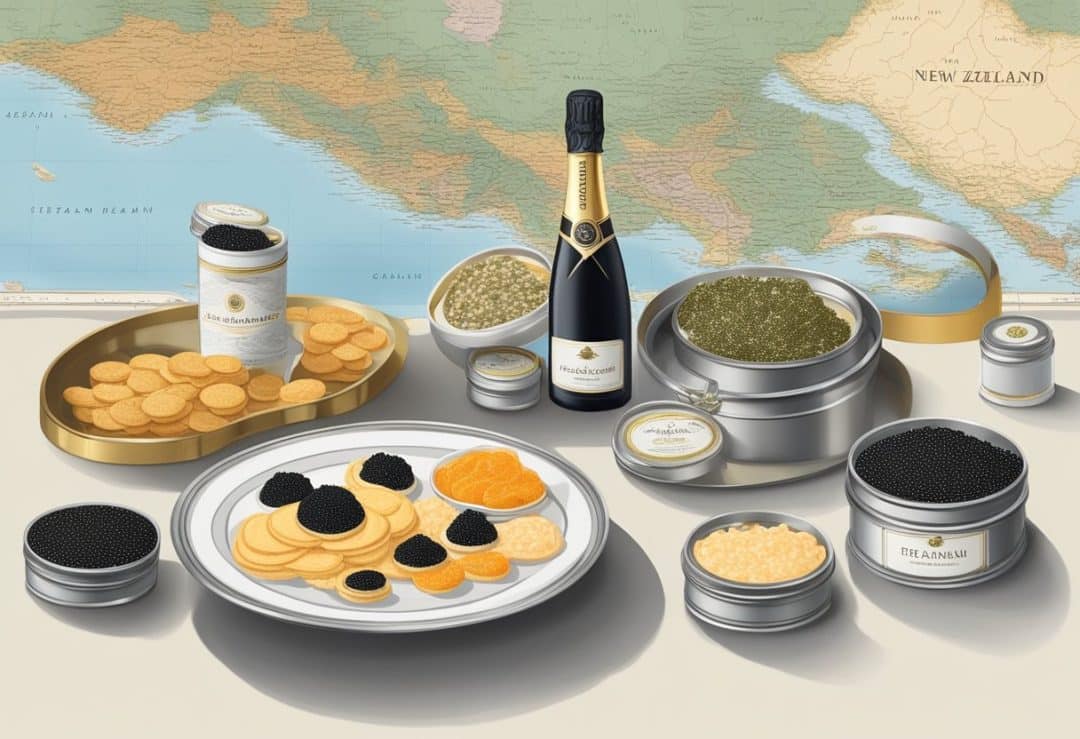



No Comments